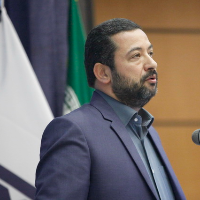Extracellular Vesicles Derived from Human Umbilical Cord Perivascular Cells Improve Functional Recovery in Brain Ischemic Rat via the Inhibition of Apoptosis
Ischemic stroke, as a health problem caused by the reduced blood supply to the brain, can lead to the neuronal death. The number of reliable therapies for stroke is limited. Mesenchymal stem cells (MSCs) exhibit therapeutic achievement. A major limitation of MSC application in cell therapy is the short survival span. MSCs affect target tissues through the secretion of many paracrine agents including extracellular vesicles (EVs). This study aimed to investigate the effect of human umbilical cord perivascular cells (HUCPVCs)-derived EVs on apoptosis, functional recovery, and neuroprotection.
Ischemia was induced by middle cerebral artery occlusion (MCAO) in male Wistar rats. Animals were classified into sham, MCAO, MCAO + HUCPVC, and MCAO + EV groups. Treatments began at two hours after ischemia. Expressions of apoptotic-related proteins (BAX/BCl-2 [B-cell lymphoma-2] and caspase-3 and -9), the amount of terminal deoxynucleotidyl transferase dUTP nick end labeling (TUNEL)-positive cells, neuronal density (microtubule-associated protein 2 [MAP2]), and dead neurons (Nissl staining) were assessed on day seven post MCAO.
Administration of EVs improved the sensorimotor function (p < 0.001) and reduced the apoptotic rate of Bax/Bcl-2 ratio (p < 0.001), as well as caspases and TUNEL-positive cells (p < 0.001) in comparison to the MCAO group. EV treatment also reduced the number of dead neurons and increased the number of MAP2+ cells in the ischemic boundary zone (p < 0.001), as compared to the MCAO group.
Our findings showed that HUCPVCs-derived EVs are more effective than their mother’s cells in improving neural function, possibly via the regulation of apoptosis in the ischemic rats. The strategy of cell-free extracts is, thus, helpful in removing the predicaments surrounding cell therapy in targeting brain diseases.
- حق عضویت دریافتی صرف حمایت از نشریات عضو و نگهداری، تکمیل و توسعه مگیران میشود.
- پرداخت حق اشتراک و دانلود مقالات اجازه بازنشر آن در سایر رسانههای چاپی و دیجیتال را به کاربر نمیدهد.



